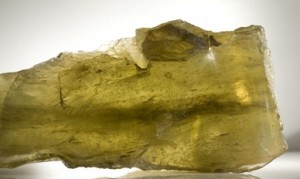There’s a July 9, 2013 news item on Nanowerk touting nanostructured glass device which is being compared to Superman’s memory crystal (see this Wikipedia essay on Superman’s Fortress of Solitude for a description of Superman’s memory crystals),
Using nanostructured glass, scientists at the University of Southampton have, for the first time, experimentally demonstrated the recording and retrieval processes of five dimensional digital data by femtosecond laser writing. The storage allows unprecedented parameters including 360 TB/disc data capacity, thermal stability up to 1000°C and practically unlimited lifetime.
Coined as the ‘Superman’ memory crystal, as the glass memory has been compared to the “memory crystals” used in the Superman films, the data is recorded via self-assembled nanostructures created in fused quartz, which is able to store vast quantities of data for over a million years. The information encoding is realised in five dimensions: the size and orientation in addition to the three dimensional position of these nanostructures. [emphases mine]
The July 9, 2013 University of Southampton news release, which originated the news item, provides more details,
A 300 kb digital copy of a text file was successfully recorded in 5D using ultrafast laser, producing extremely short and intense pulses of light. The file is written in three layers of nanostructured dots separated by five micrometres (one millionth of a metre).
The self-assembled nanostructures change the way light travels through glass, modifying polarisation of light that can then be read by combination of optical microscope and a polariser, similar to that found in Polaroid sunglasses.
The research is led by Jingyu Zhang from the University’s Optoelectronics Research Centre (ORC) and conducted under a joint project with Eindhoven University of Technology.
“We are developing a very stable and safe form of portable memory using glass, which could be highly useful for organisations with big archives. At the moment companies have to back up their archives every five to ten years because hard-drive memory has a relatively short lifespan,” says Jingyu. [emphasis mine]
“Museums who want to preserve information or places like the national archives where they have huge numbers of documents, would really benefit.”
This work was presented at the CLEO 2013 (Conference on Lasers and Electro-Optics in San Jose [US]). Here’s a link to and a citation for the 2 pp presentation paper,
5D Data Storage by Ultrafast Laser Nanostructuring in Glass by Jingyu Zhang, Mindaugas Gecevičius, Martynas Beresna, and Peter G. Kazansky. Presentation paper for CLEO 2013
© 2013 Optical Society of America OCIS codes (140.3390) Laser materials processing, (210.0210) Optical data storage
This research was conducted as part of the European Union’s Femtoprint project, which is funded under the Framework Programme 7 initiative. Here’s more about Femtoprint from the homepage,
FEMTOPRINT is to develop a printer for microsystems with nano-scale features fabricated out of glass. Our ultimate goal is to provide a large pool of users from industry, research and universities with the capability of producing their own micro-systems, in a rapid-manner without the need for expensive infrastructures and specific expertise. Recent researches have shown that one can form three-dimensional patterns in glass material using low-power femtosecond laser beam. This simple process opens interesting new opportunities for a broad variety of microsystems with feature sizes down to the nano-scale. These patterns can be used to form integrated optics components or be ‘developed’ by chemically etching to form three-dimensional structures like fluidic channels and micro-mechanical components. Worth noticing, sub-micron resolution can be achieved and sub-pattern smaller than the laser wavelength can be formed. Thanks to the low-energy required to pattern the glass, femtosecond laser consisting simply of an oscillator are sufficient to produce such micro- and nano- systems.
These systems are nowadays table-top and cost a fraction of conventional clean-room equipments. It is highly foreseeable that within 3 to 5 years such laser systems will fit in a shoe-box. The project specific objectives are:
1/ Develop a femtosecond laser suitable for glass micro-/nano- manufacturing that fits in a shoe-box
2/ Integrate the laser in a machine similar to a printer that can position and manipulate glass sheets of various thicknesses
3/ Demonstrate the use of the printer to fabricate a variety of micro-/nano-systems with optical, mechanical and fluid-handling capabilities. A clear and measurable outcome of Femtoprint will be to be in a situation to commercialize the ‘femtoprinter’ through the setting-up of a consortium spin-off. The potential economical impact is large and is expected in various industrial sectors.
I think any archivist hearing about data storage that can last a million years will be thrilled although I suspect it’s going to be a long, long time before these 5D ‘memory’ crystals are going to be storing any data for anyone. In the meantime, there are efforts such as the Council of Canadian Academies’ (CCA) Memory Institutions and the Digital Revolution assessment (mentioned 2/3 of the way down in my June 5, 2013 posting).

